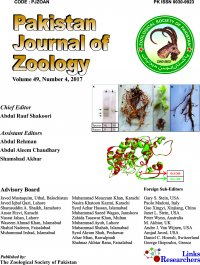First Record of Autumn Migration of Juvenile Chinese Egrets Egretta eulophotes from South Korea Tracked with GPS Telemetry
Seok-Jun Son1,3, Sung-Kyung Lee1, Jung-Woo Oh1, In-Kyu Kim2, Dal-Ho Kim2, Bo-Ra Hyun1 and Jung-Hoon Kang1,*
1National Research Institute of Cultural Heritage, Cultural Heritage Administration, Daejeon 35204, Republic of Korea
2Korea Institute of Environmental Ecology, Daejeon 34014, Republic of Korea
3Korea Institute of Wildlife Ecology, Daejeon 34388, Republic of Korea
* Corresponding author: birdlife@korea.kr
ABSTRACT
Understanding bird migration strategies is crucial for identifying the habitat of birds. Recently, GPS tracking has been utilized to identify bird migration routes. The Chinese egret Egretta eulophotes is a migratory bird distributed in East Asia; most populations breed on uninhabited islands off the west coast of the Korean Peninsula. Location tracking devices were attached to two juvenile Chinese egrets from an uninhabited island in the Chilsan Archipelago off the west coast of the Korean Peninsula. GPS tracking was used to identify their autumn migration route and their home range and habitat type in breeding (post-fledging/pre-migration stages) and wintering sites (post-migration stage). The two egrets crossed the East China Sea to Taiwan. The signal for one bird was lost, whereas the other rested and then moved to the Philippines for winter. The home ranges of the two birds were reported using kernel density estimation (KDE). During the post-fledgling stage, the results showed KDE 95% (90.46 km2) / KDE 50% (26.29 km2,) and KDE 95% (45 km2) / KDE 50% (5.56 km2). While during the pre-migration stage, it showed KDE 95% (34.40 km2) / KDE 50% (8.84 km2) and KDE 95% (43.98 km2) / KDE 50% (5.92 km2). In the Philippines wintering site (post-migration stage), the home range of the bird was KDE 95% (15.14 km2) / KDE 50% (3.39 km2). For the first time, we identified the autumn migration route and habitat home range type of juvenile Chinese egrets. Further investigation is needed to identify the migration routes and habitats of additional individuals and establish a management plan for the conservation of Chinese egrets’ habitat.
To share on other social networks, click on any
share button. What are these?










